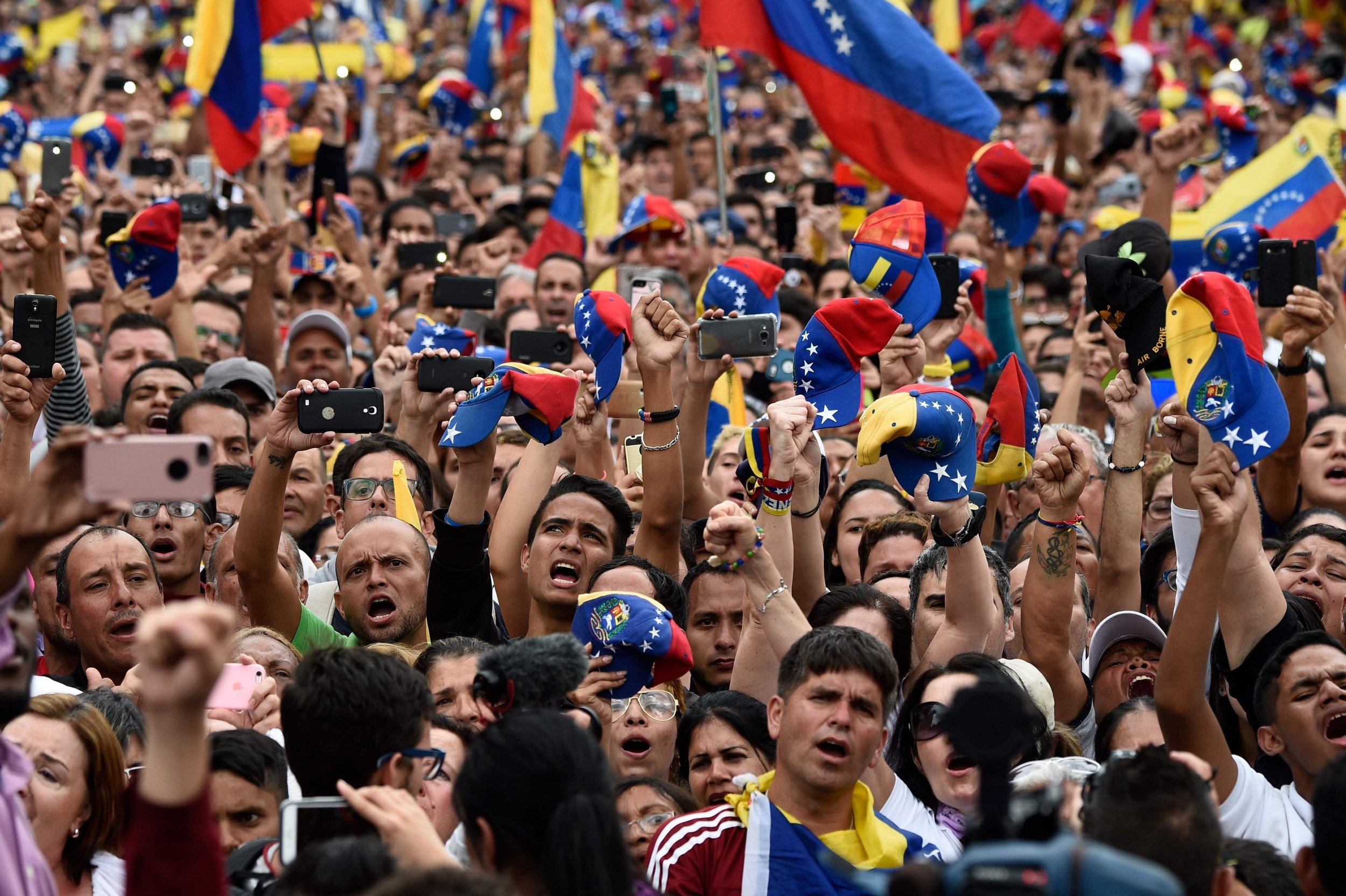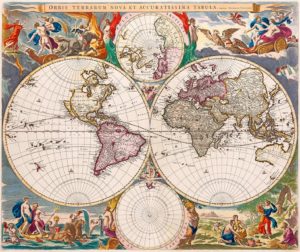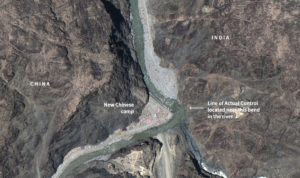Venezuela-China, explained: How will Venezuela’s political crisis affect China?

This is the fourth of a four-part series spotlighting the Venezuela-China relationship.
Part One: China’s choice to penetrate the Latin American market
Part Two: China, Venezuela, and the New Silk Road in between
Part Three: The geopolitics of the dragon in Little Venice
Part Four: China, a long-term partner for Venezuela?

Key points:
- In 2001, Venezuela became the first Hispanic country to enter into a “strategic development partnership” with China, a relationship that was elevated to “comprehensive strategic partnership” in 2014, and which now totals at least 790 investment projects in Venezuelan territory. They range from infrastructure, oil, and mining to light industry and assembly.
- China’s development projects in Venezuela have disappeared over the past 11 years, mostly devoured by corruption or by the debt default that the South American country has incurred with the Asian giant, which froze many of its direct investments.
- Loans from China to Venezuela reached at least $50 billion, with some estimating the number to have been as high as $60 billion.
- The uncertainty regarding the figure is the result of opaque loans, split into payments of $2 billion and $5 billion each.
- As of 2016, China has stopped issuing new loans to Venezuela. Since then, Chinese representatives have sought unofficial meetings with individual members of the opposition, trying to secure guarantees that the debt payability, about $20 billion, is honored in the future.
- In 2000, there was an immigrant population of approximately 60,000 Chinese in Venezuela. Eighteen years later, President Nicolás Maduro estimates there are 500,000 Chinese citizens residing in the country.
- Venezuela has proven gold reserves with a commercial value of more than $200 billion. In Coltan, reserves are valued at at least $100 billion, and iron is estimated at more than $180 billion. China worked with Venezuela on the Venezuelan Mining Map in an area of 111,800 square kilometers (12.2% of Venezuelan territory) and currently has direct investments of over $580 million.

PART FOUR
China, a long-term partner for Venezuela?
Venezuela is in a state of turmoil. The incumbent president, Nicolás Maduro, was sworn in earlier this month, but two weeks later, opposition leader Juan Guaidó declared himself acting president — a move supported by the likes of the U.S., Spain, Germany, France, the UK, and much of Latin America (along with tens of thousands of protesters in Venezuela), but rejected by China, Russia, Turkey, Bolivia, etc.
But even political crisis is unlikely to undo the wide commercial and geostrategic relationship linking Venezuela and China. This is demonstrated by recent meetings between Chinese officials and representatives of the Venezuelan opposition, which supports Guaidó, who himself has said that he will maintain trade agreements with China and Russia. Additionally, China has entered a phase of commercial expansion in Latin America that makes Venezuela an essential source of business, regardless of who’s in charge.
In the past, opponents of the Hugo Chávez and Nicolás Maduro governments have viewed Venezuela’s relationship with China with suspicion. Politicians such as the two-time presidential candidate and former state governor Henrique Capriles have openly questioned the Venezuelan government’s business dealings with China, including the rampant corruption that we detailed in Part 3 of this series.
In 2014, then-governor Capriles criticized President Xi Jinping’s visit to Venezuela, denouncing the projects with China as unfulfilled promises. Later, he said China intended to “ignore the crisis” in Venezuela.
News sources consulted, however, assure that Capriles made at least one meeting with Chinese leaders, with the aim of establishing bridges. But these encounters have not been officially reported.
In 2016, the national coordinator of the party founded by Capriles, Julio Borges, officially traveled to China to meet with representatives. He was invited by the China Association for International Understanding (CAFIU). Borges explained the challenges facing the future of his country, and later lauded China’s intent to “know all the visions” of the political actors in his country.

According to an investigation published by the Associated Press, in 2016 the Chinese ambassador to Venezuela dined privately with opposition leaders, despite the fact that the Venezuelan government asked foreign diplomats not to see figures they accuse of trying to destabilize the country. The opposition leaders began to soften their criticism in order to secure help in case they came to power.
A year later, in 2017 and in the midst of a popular revolt that left at least 140 dead in Venezuela, Borges continued to seek rapprochement with China, as well as with Russia, at the 137th annual meeting of the Inter-Parliamentary Union (IPU) held In St. Petersburg. The IPU brought together 1,550 delegates, 700 parliamentarians, 85 presidents, and 50 vice presidents.
Other opposition leaders have pointed out the need to establish ties with China and Russia in the future. As of 2016, China has stopped issuing new loans to Venezuela. Since, Chinese representatives have participated in unofficial meetings with individual members of the opposition in the search for promises that debts will be settled in the future.
In September, President Maduro said that, as part of Venezuela’s strategic alliance with China, Venezuela plans to launch a fourth satellite, which he called Guaicaipuro, after an indigenous 16th-century leader and hero. Twenty-eight new agreements were also signed in various areas, such as housing, medical supplies, telecommunications, and foods.
The Chinese in Venezuela
The first Cantonese immigrants arrived to Venezuela in 1947. Now, about 60,000 Chinese citizens reside in Venezuela, with about 400,000 of Chinese descent. The Chinese population in Venezuela is the fourth-largest in the Americas, behind the U.S., Canada, and Peru.
On September 29, 2005, on the occasion of the 56th anniversary of the founding of the People’s Republic of China, the Commercial Chamber of Chinese Enterprises was created in Venezuela to promote coordination and collaboration between companies.
But recent protests and violence has led to the exodus of hundreds of Chinese citizens. The South China Morning Post wrote in October 2017: “For Venezuela’s Chinese residents who fled the country’s chaos, the IMF’s forecasts (of 2,349 percent inflation) dampen their hopes of one day returning to retrieve assets.”
Chu Yin, an associate professor at the University of International Relations in Beijing, told SCMP it was too early to say whether China’s financial support for Venezuela has been a failure, since Venezuela could still pay China’s loans with oil, despite the crisis.
“Venezuela is on brink of collapse, but it has not collapsed — the army is still listening to the government,” Chu told SCMP. “For China, the tricky thing is, you know Venezuela is risky, but you also know you have to take risks to gain possible returns.”
By August 2017, Hua Chunying, deputy director of China’s Foreign Ministry, was asking the opposition and the government to hold peaceful talks. She also called for protection for China’s citizens, since there were several attacks on Chinese shops and businesses. Subsequently, the violence gave way — even as street protests continue to this day.
Part One: China, Venezuela, and the New Silk Road between
Part Two: China, Venezuela, and the New Silk Road between
Part Three: The geopolitics of the dragon in Little Venice






